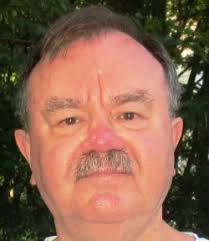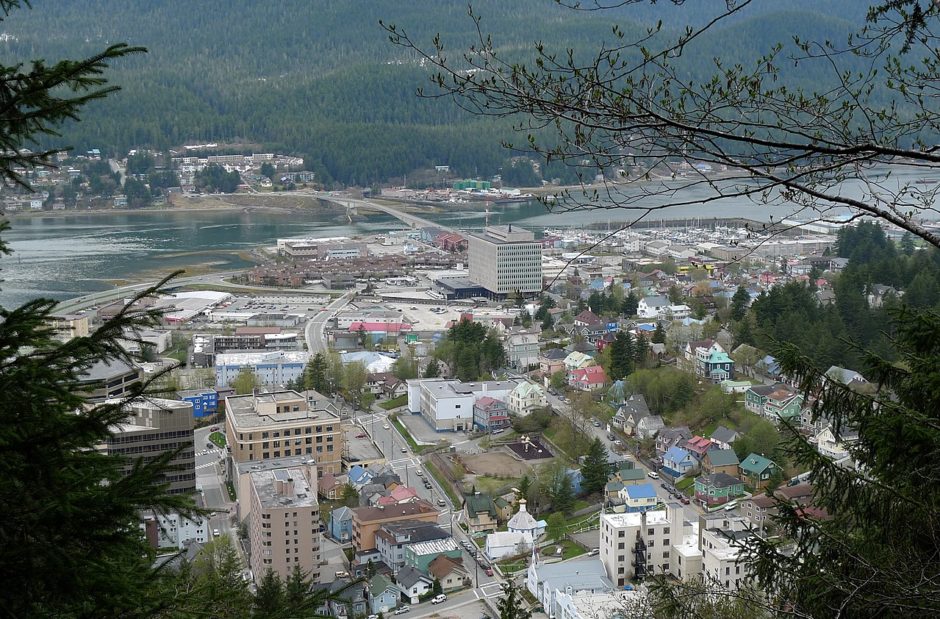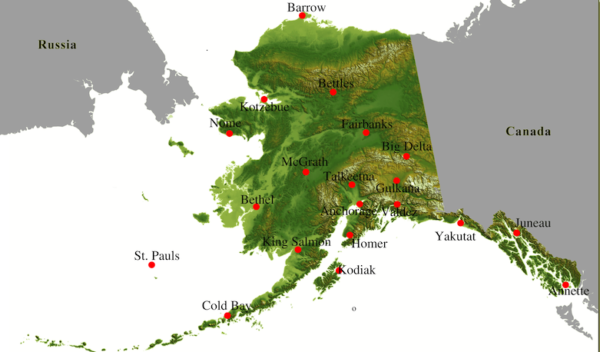
At a conference I attended in Washington in late June, I heard another speaker refer to “remote” Alaska. That it certainly is — it’s five times zones west of Prince Edward Island, where I live.
A week later, we travelled to Juneau, the capital, to attend the 50th year reunion of my wife Pat’s high school.
Alaska belonged to tsarist Russia until sold to the United States in 1867, and remnants of that past are visible in onion-domed Russian Orthodox churches and aboriginal Alaskans with Russian surnames.
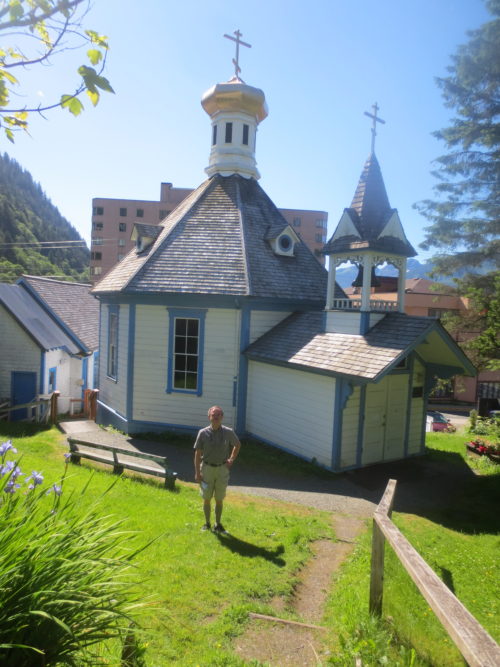
The St. Nicholas Russian Orthodox Church, built in the 19th century, contains icons brought from Russia, and sits on a steep hill overlooking the downtown. It was built by Tlingit natives who were Orthodox.
One of the saints of the church is St. Peter the Aleut, a native Alaskan. Today, indigenous Alaskans comprise some 15 percent of the state’s 740,000 people. Most others are people whose families came from the “lower 48.”
Alaska became the 49th American state — and, at 1,717,856 square kilometers, by far the largest — in 1959.
Alaska is a “red” state politically. Donald Trump carried it in 2016, and both U.S. senators are Republicans. Still, here in the Alaska panhandle, liberals are not an extinct species and many people are Democrats.
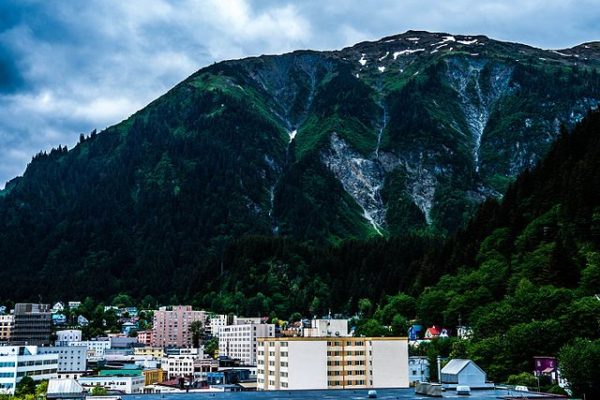
As everyone knows, Alaska’s scenery is majestic. Juneau is located on the Inland Passage of the Pacific Ocean and surrounded by mountain ranges.
Founded in 1880 as a gold mining town — you can take tours of the old mines — the mountains loom over the city making for dramatic and spectacular views.
The city of 32,000 people, above the 58th parallel, sits at the base of Mount Roberts and can only be reached by boat or airplane.
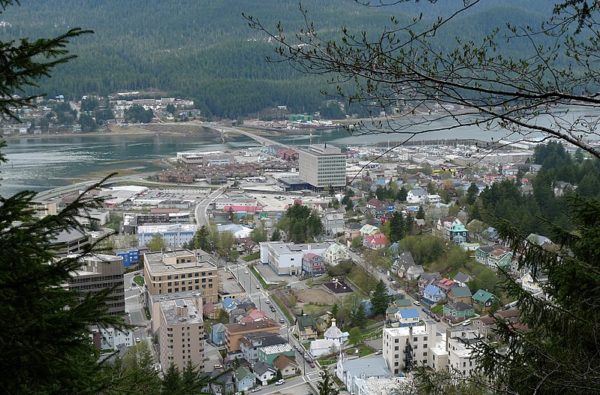
The absence of a road network is due to the extremely rugged terrain surrounding the city. This in turn makes Juneau, in effect, an island in terms of transportation, in spite of the city being located on the mainland. Even in the city itself, the very steep hills make walking a form of exercise.
The state-owned ferry system, called the Alaska Marine Highway, connects Juneau with 13 other cities in southeast Alaska, as well as with the continental road system.
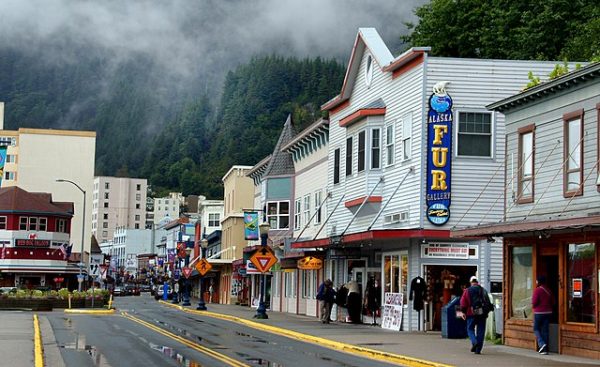
Alaska Airlines links Juneau with the other towns in southeast Alaska, as well as other cities across the world via connections through Seattle and Anchorage, the state’s largest city.
A good starting point for learning about the city is the Juneau-Douglas City Museum, which also offers walking tours of Juneau’s historic buildings.
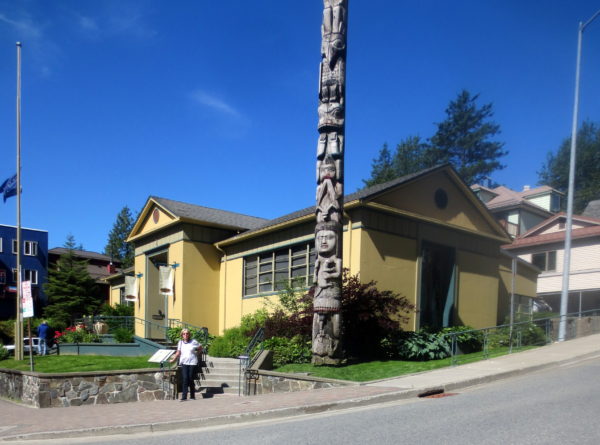
Juneau has become a major destination for cruise ships. In summer, as many as six huge boats dock in the cruise ship harbor, and the city is overrun with tourists.The downtown begins to resemble a virtual theme park. Indeed, most shops sell souvenirs and trinkets.
A tramway, opened in 1996, carries visitors 550 meters up Mount Roberts, elevation 1,164 meters, through the rain forest to an alpine area.
There are plenty of Juneau hiking trails, wildflowers and views of Gastineau Channel separating the mainland from Douglas Island, part of the Alexander Archipelago.The nature center had in its care a bald eagle that had been injured.
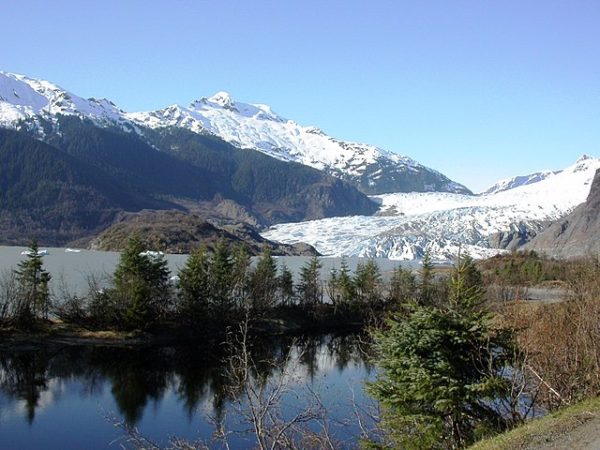
The Mendenhall Glacier, some 22 kilometers long, is located in Mendenhall Valley, about 19 kilometers from downtown Juneau, and is also a tourist destination. The glacier and surrounding landscape is protected as part of the Mendenhall Glacier Recreation Area, a federally designated unit of the Tongass National Forest.
The glacier has recently come to the forefront of the international debate on global warming because it is retreating and shrinking. A lake has now formed at its base from the melting ice.
On one of our days in Juneau, we were passengers on a 17-foot skiff, hardly bigger than a motorboat, which left Auke Bay Harbor for Admiralty Island, home of about 1,000 brown bears. I’ve never been in ocean water on such a small vessel. We spotted more than 10 humpback whales on the 2 1/2 hour boat ride.
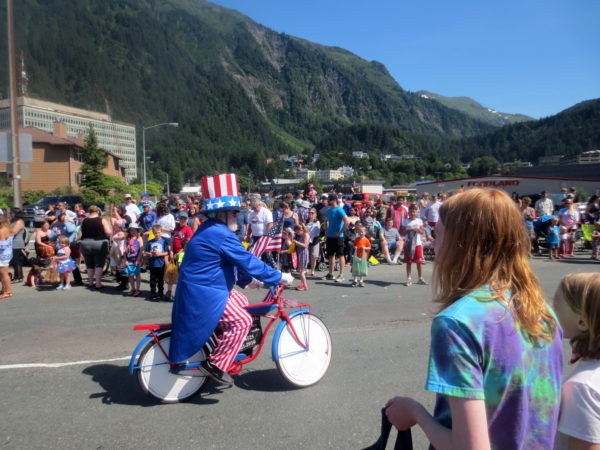
On the fourth of July, America’s Independence Day, we watched Juneau’s annual parade. The temperature actually reached 28C — not bad for a place this far north. Sunny weather and unblemished skies drew thousands for the festivities. The large crowds were enthusiastic and wore all sorts of patriotic clothing.
There were parades, races, music, sand sculpting, food vendors, and barbeques. We went to the one at Douglas United Methodist Church on Douglas Island. It was indeed a very spirited event.
Henry Srebrnik is a professor of political science at the University of Prince Edward Island.
